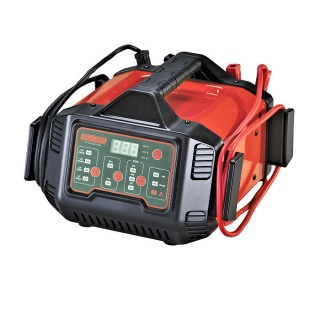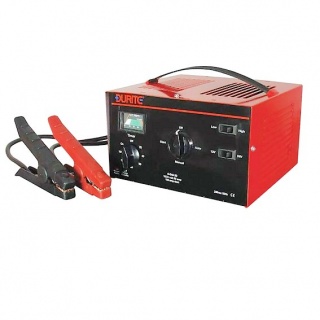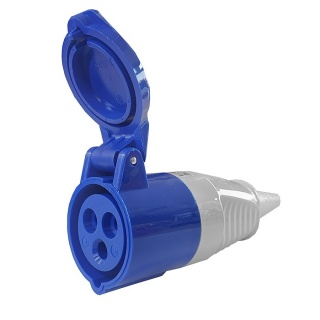The Durite lightweight and portable EV Type 2 Charger with UK 3-Pin plug allows you to charge your electric vehicle battery anywhere with Mains power. With an adjustable 6-13A output, it can be used to charge multiple electric vehicle types.
- 110-230V AC, 3.6KW.
- Connects to UK 3-Pin Mains power.
- For EVs with Type 2 charging points and Li-ion batteries.
- Switch between 6A, 8A, 10A and 13A.
- LED display control box.
- Type 2 Connector protected to IP54; Control box protected to IP67.
- 5m cable.
- Short circuit protection.
- Over and under frequency protection.
- Over Current Protection.
- Leakage Current Protection (restart recover).
- Over Temperature Protection - Overload protection (self-checking recover).
- Ground Protection.
- Over-voltage and under-voltage protection.
- IEC 62752, IEC 61851 UKCA, CE, RoHS and REACH Approved.
Note: This EV Charger provides protection for the vehicle's onboard electronics, the charger, the battery and the user. It is protected against short circuits, over and under frequency, over current, leakage current, over temperature, overload, over-voltage and under voltage, and it also offers ground protection.
Operation
- Use the current switch button (see additional image) to select the maximum charging current.
- Select the charging current before inserting the charging plug (car side).
How to Start Charging
- Step 1. Take out the charger and firmly insert the plug into socket-outlet
- Step 2. Pull the cap, and completely plug the vehicle connector into the vehicle inlet.
- Step 3. The device starts charging automatically while the READY/CHARGE, and POWER indicators are all green.
- Step 4. Factory default current is 16A; please press the "CURRENT SETTING" button to adjust your required current. Amperes to the maximum 16-ampere cycles. The device will default to the last current setting when we charge the next time.
How to Stop Charging
- Step 1. Press the button and disconnect the vehicle connector from the vehicle inlet.
- Step 2. Close the protective cap of the vehicle inlet, and put on the protective cap of the vehicle connector.
- Step 3. Disconnect the plug from the socket outlet.
- Step 4. Pack up the EV charger cable and put it into the bag.
LED Display Status
| Condition | Green (One) | Green (Two) | Green (Three) | Fault (Red) |
| Initial Mode | Light On | Lights Out | Lights Out | Lights Out |
| Connection Mode | Light On | Twinkle (1S) | Lights Out | Lights Out |
| Charging Mode | Racing Light | Racing Light | Racing Light | Lights Out |
| Finished Mode | Lights On | Lights On | Lights On | Lights Out |
| Fault Mode | Lights On | Lights On | Lights On | Twinkle |
Warnings for Translation
- Use the charger for charging Li-Ion batteries only.
- Do not use the battery charger for other types of batteries; these may burst and cause injury to persons and damage to property.
- Use only attachments recommended or sold by the manufacturer. Use of non-recommended attachments may result in fire, electric shock, or injury.
- When disconnecting the battery charger, pull by the plug, not by the cord. Pulling on the cord may cause damage to the cord or the plug.
- Do not operate the charger with a damaged cord or plug. Have the cable replaced immediately.
- Do not operate the charger if it has received a sharp blow, been dropped, or otherwise damaged in any way. Take it to a qualified professional for inspection and repair.
- Do not disassemble the charger. Take it to a qualified professional when service or repair is required. Incorrect reassembly may result in electric shock or fire.
- To reduce the risk of electric shock, unplug the charger from the outlet before attempting any maintenance or cleaning.
- Do not use an extension cord unless absolutely necessary. Using an improper extension cord could result in fire or electric shock. If an extension cord must be used, make sure that:
- The pins on the plug of the extension cord are the same number, size, and shape as those of the plug on the charger.
- The extension cord is correctly wired and in good electrical condition.
- The wire size is large enough for the AC ampere rating of the charger.
- Always charge the battery in a well-ventilated area. NEVER operate in a closed-in or restricted area without adequate ventilation. WARNING: Risk of explosive gas.
- Locate the charger as far away from the battery as the DC charger cable permits.
- Do not expose the charger to rain or snow.
- NEVER charge a frozen battery. If battery fluid (electrolyte) is frozen, bring it into a warm area to thaw before charging.
- NEVER allow battery acid to drip on the charger when reading specific gravity or filling the battery.
- NEVER set a battery on top of the charger.
- NEVER place the charger directly above the battery being charged. Gases from the battery will corrode and damage the charger.
- NEVER touch the battery clips together when the charger is energized.
- WARNING: Wear complete eye protection and clothing protection when working with lead-acid batteries.
- Make sure someone is within range of your voice or close enough to come to your aid when you work with or near a battery.
- Have plenty of fresh water and soap nearby for use if battery acid contacts skin, clothing, or eyes. If battery acid contacts skin or clothing, wash immediately with soap and water.
- Avoid touching your eyes while working with a battery. Particles (corrosion) may get into your eyes! If particles enter your eye, immediately flood the eye with running cold water for at least 10 minutes. Get medical attention immediately.
- Remove all personal metal items such as rings, bracelets, necklaces, and watches when working with a battery. A battery can produce a short-circuit current high enough to weld a ring.
- Take care not to drop a metal tool or other metal onto the battery. Metal may cause sparking or short-circuit the battery or another electrical device. Sparking may cause an explosion.
- Always operate the battery charger in an open, well-ventilated area.
- NEVER smoke or allow a spark or flame in the vicinity of the battery or engine. Batteries generate explosive gases!
Specifications
| Type | Electric Vehicle Battery Charger |
| Battery Type | Li-Ion |
| Rated Input Voltage | 110-230V AC |
| Rated Output Voltage | 110-230V AC |
| EV Charging Point | Type 2 |
| Output Current | 6A, 8A, 10A and 13A |
| Cable Length | 5 Metres |
| Mechanical Life | 10,000 No Load Plug In / Pull Out |
| Operating Temperature | -25°C to +55°C (Relative Humidity 20-85%) |
| Storage Temperature | -40˚C to +80˚C |
| Certificates | IEC 62752, IEC 61851 UKCA, CE, RoHS and REACH |
| Ingress Protection | IP67 |
| Materials | ABS, PC (Flame retardant grade UL94 V-0), Copper and Brass |
| Weight | 2.3Kg |




.jpg)
.jpg)


.jpg)
.jpg)